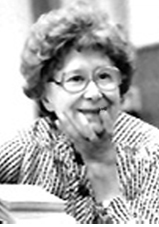GT & Mathematics
In 2004 a student asked for information about how Gestalt theory relates to mathematics.
Prof. Edith Luchins wrote the following reply.
How Gestalt theory relates to mathematics
We think that the best reference is Max Wertheimers Productive Thinking, Harper, 1945, with the enlarged edition in 1959, edited by his son, Michael Wertheimer. The book has many references to teaching math. e.g., to teaching the formula for the area of a parallelogram in a manner that is blind to the structure of the figure (contrastructural) or that takes the structure into account (prostructural); different methods of finding the sum of the interior or exterior angles of a polygon; and different methods of finding the sum of arithmetic series. A thesis is that methods are needed that help the learner to grasp the structure whether it be of a geometric figure or an arithmetic series, etc.
More examples are given in our volumes that reconstruct Max Wertheimer's seminars at the New School for Social Research: Abraham S. Luchins & Edith H. Luchins,Wertheimer's Seminars Revisited: Problem Solving and Thinking, State University of New York, 1970.
Fifty years ago we co-authored a paper: "A Structural Approach to the Teaching of the Concept of Area in Intuitive Geometry", J. Educational Research, Vol. 7, 528-533, 1947. Others of our papers that may interest you include "Geometric Problem Solving Related to Differences in Sex and Mathematical interests", J. Genetic Psychology, 134, 255-269, 1979, which describes some geometric figures that Wertheimer used in his demonstrations and compares female and male students' reactions to the problems and to hints given to help see the structure of the problems and get insight into their solutions. Another is "Students' Misconceptions in Geometric Problem Solving", Gestalt Theory, 7, No. 2/1985, 66-77. Our recent surveys of experiments on the water jar problems (arithmetical volume-measuring tasks) included a section on educational implications suggested by Wertheimer. Discussed are such concepts as rote drill, often used in teaching arithmetic, and how it may lead to Einstellung Effects or mental sets which may foster mechanization, habituation, and stereotyped approaches to problems rather than productive thinking. Of possible interest may be a paper on computer solutions of the water jar problems summarized in Gestalt Theory, 18, No. 2/1996, 143-147, and a submitted manuscript on visualization of geometric objects and the role of computers.
There are also educational implications for teaching mathematics in our articles, "The Influences of Thinking, Surveyability, and Illustrations on Einstellung Effects," Gestalt Theory, 9, No. 1/1987, 17-27, and "Computer Simulation, Algorithms, and Heuristics in Einstellung Effects," Genetic, Social, and General Psychology Monographs,115(1), 49-80, 1989. Also relevant are "The Einstein-Wertheimer Correspondence on Geometric Proofs," The Mathematical Intelligencer, 12(2), 35-43, 1990, and "Task Complexity and Order Effects in Computer Presentation of Water-Jar Problems," Journal of General Psychology, 118(1), 45-72, 1991.
I apologize for so many references to our work. Abraham S. Luchins was Wertheimers research assistant at the New School, and has been active in promulgating the educational implications of Gestalt psychology. Let me mention his invited address at the New York Academy of Sciences, "On Some Aspects of the Creativity Problem in Thinking", Annals of the New York Academy of Sciences, Vol. 91, Art. 1, pp 128-141, 1960. Also of possible interest is his paper "Implications of Gestalt Psychology for AV (Audio Visual) Learning", which appeared in AV Communication Review, Vol. 9, No. 5, 7-31, 1961. In it he notes:
"Gestalt psychology suggests not so much what pupils should learn but how they should learn. It is concerned not only with responses, but also with the processes that lead to responses....the same overt response may result from a process of understanding involving organization and insight into structure as from a process of memorization in which stimulus and response are arbitrarily connected. However, consequences of learning through understanding and organization seem to differ from the consequences of learning through memorization."
This issue of the AV Communication Review describes approaches to AV learning in different schools of psychology, with interesting comparisons among them drawn by the editor, Wesley C. Meierhenry.
Last but not least let me mention George Katonas book, Organizing and Memorizing, New York: Columbia University Press, 1940, and Catherine Sterns Children Discover Arithmetic: An Introduction to Structural Arithmetic, New York: Harper, 1949, based on Gestalt principles; an earlier text is Principles of Mental Development: A Textbook in Educational Psychology, New York: Crowell, 1932 (reprinted 1962), especially Chapter XXV which deals with Learning of Arithmetic. Also of interest is "A Note on the Circle" of Erwin Levy, Gestalt Theory, 12, pp 116-122, 1990.
I hope this long answer is of some help and not completely off the mark.
Edith H. Luchins
Professor Emerita of Mathematics
(Prof. E.H. Luchins died November 18, 2002 - click here for the E.H. Luchins page.)





